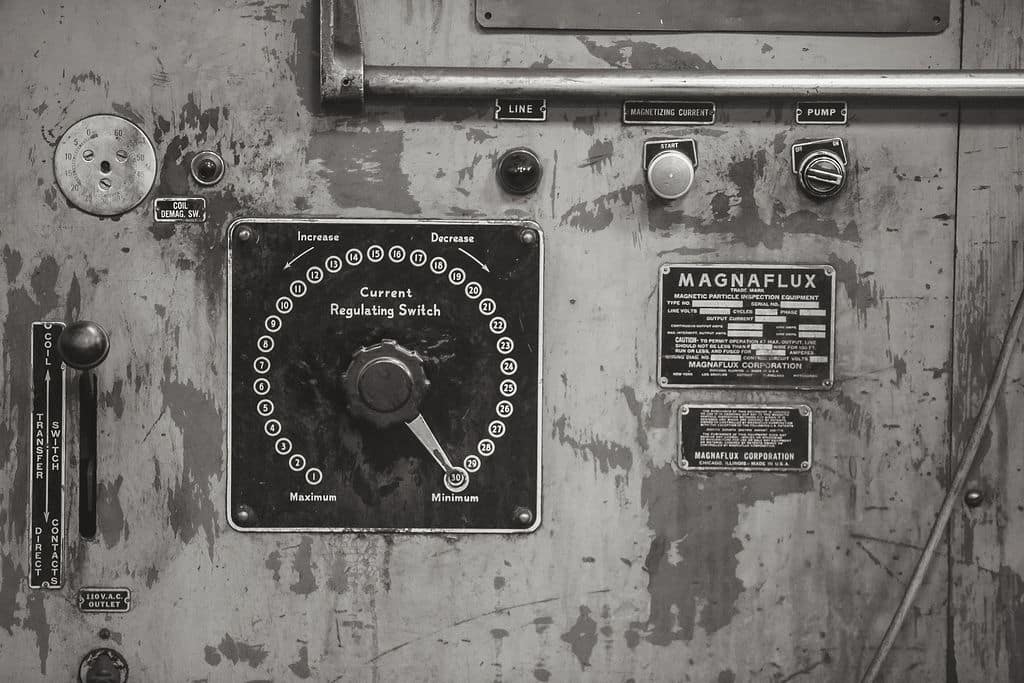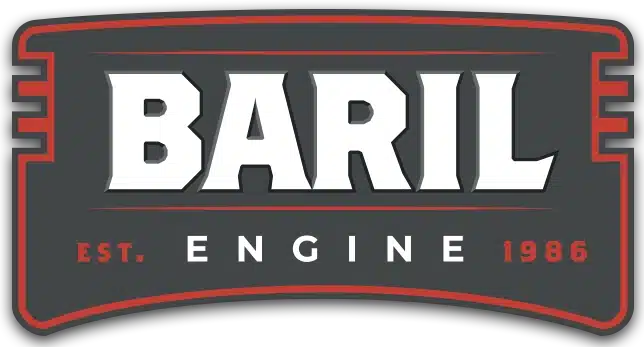Before reusing engine components, it is crucial to clean and inspect them thoroughly to ensure they are free from cracks and defects. Even minor flaws, when left unaddressed, can lead to significant failures. Baril Engine utilizes several forms of non-destructive testing to identify cracks that have started or migrated to the surface of the casting. These methods require a clean, paint-free surface, which is why all of our services start with a thorough cleaning of your components.
Dry Magnetic Particle Inspection (Dry MPI)
Dry MPI can detect surface cracks that are around 0.005 inches (0.127mm) or larger, depending on the crack geometry and surface condition.
Dry MPI uses dry ferromagnetic particles which are applied to the surface while the component is magnetized. If a crack is present, the particles will collect along the defect, forming a visible indication.
We use Dry MPI to locate cracks in cylinder heads and engine blocks because extremely small cracks in these parts are typically not a problem. With this inspection we are looking for cracks that can affect the overall structural integrity of the part or that could lead to a passage between coolant and oil or combustion areas of the engine.
Wet Magnetic Particle Inspection (Wet MPI)
Wet MPI can detect cracks as small as a few micrometers, making it highly sensitive to very small surface cracks.
Wet MPI uses a liquid suspension of fine magnetic particles applied to the surface of a magnetized component. If a crack is present, it disrupts the magnetic field, causing the particles to gather at the defect, making it visible under proper lighting.
Wet MPI is considered one of the most effective methods for finding tiny cracks on smooth surfaces, as the liquid suspension allows particles to flow easily into any defect. We use this method on crankshafts and connecting rods because these parts see significant loads and ANY crack is likely to cause a failure.
Dye Penetrant Inspection (DPI)
Dye penetrant inspection is a versatile method used for detecting surface cracks in both ferrous and non-ferrous materials. Unlike magnetic particle inspection, DPI does not require the component to be magnetic. The process begins by cleaning the surface and applying a liquid dye penetrant, which seeps into any surface defects. After a set time, excess dye is removed, and a developer is applied to draw out the dye from cracks, making them visible under white or ultraviolet light. DPI is an effective and low-cost method for identifying fine surface cracks in materials such as aluminum, titanium, and stainless steel.

